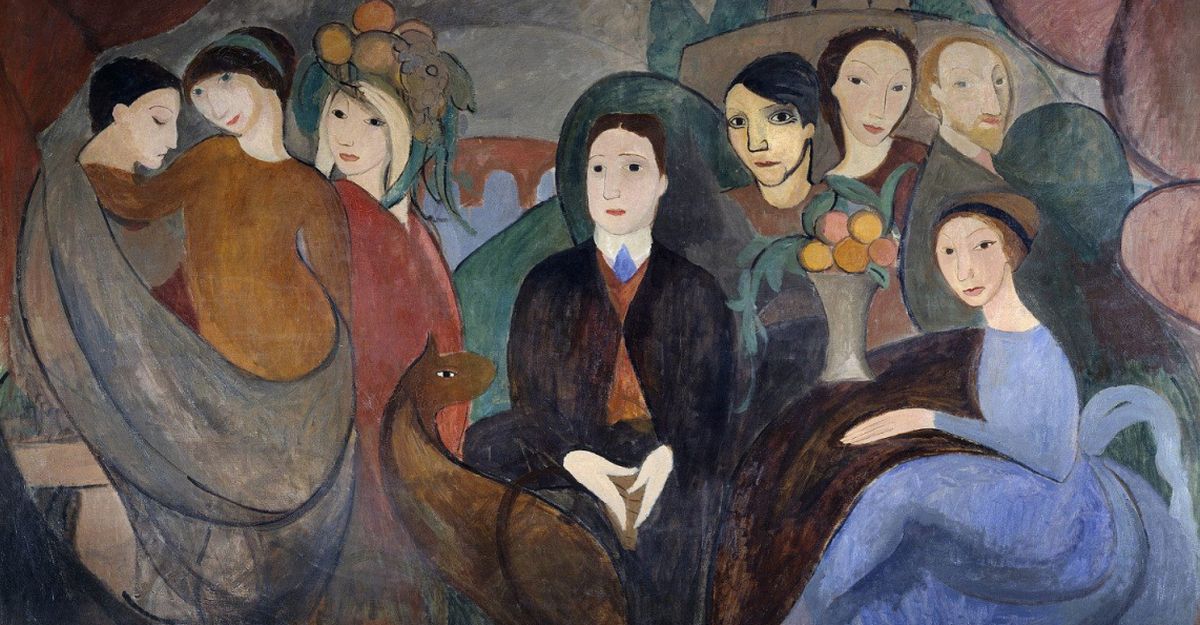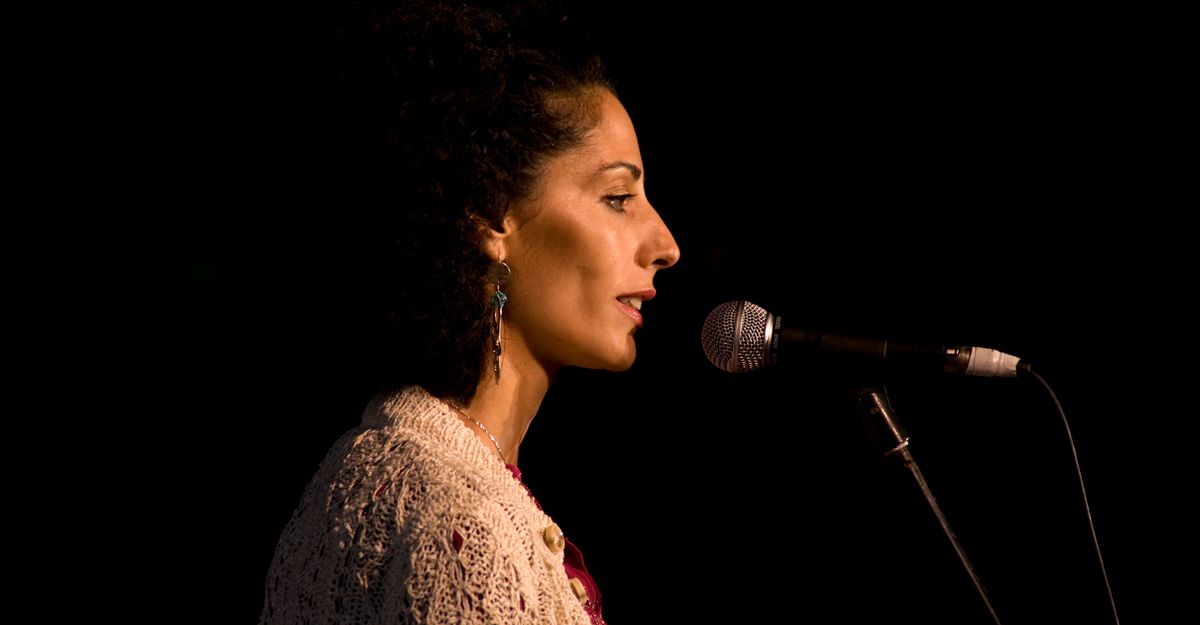 The Tribe arrived on my desk one afternoon last week and I began reading it on a very late flight from Melbourne to Sydney on that same day. I read it during the flight. I read it on the train to the city. I read it on the bus home. And I finished it in bed. By then it was one in the morning and I was one satisfied reader.
The Tribe arrived on my desk one afternoon last week and I began reading it on a very late flight from Melbourne to Sydney on that same day. I read it during the flight. I read it on the train to the city. I read it on the bus home. And I finished it in bed. By then it was one in the morning and I was one satisfied reader.
This is a significant and astonishing novel that takes us inside the cultural world of the Adam family, a socio-economically disadvantaged Australian Syro-Lebanese Alawite extended family from Sydney and Melbourne.
All the qualifiers are necessary. There are only a limited number of situations where talking in general terms about ‘Islam in Australia’ is significant and valuable. More often than not, such a generalisation is an empty abstraction used by an army of unsubtle and uninformed commentators. They use it as a portmanteau where they can hang their ignorance, prejudices and bigotry – not to mention their right to be ignorant prejudiced bigots. The Tribe is at the very opposite end of the spectrum. Michael Mohammed Ahmed is a writer who has an infinite appreciation of the social and cultural particularities that make up the cultural milieu he is writing about.
I cannot guarantee that all readers will enjoy it as much as I did, of course. I could have especially enjoyed it because, although I don’t know much about Alawite families as such, my familiarity with Lebanese culture might have acted as a bridge to make me more appreciative of the nuances of the cultural world so beautifully exposed and explored in the novel. It could also be because it particularly appealed to me as an anthropologist. The book is in the best tradition of ethnographic novels: it generously offers us access to a unique cultural world and describes to us some of its features, warts and all, with remarkable detail. Regardless, I doubt that it would leave any reader unaffected by both its content and the quality of the writing and storytelling. It will especially appeal to readers desiring to know something beyond generalised platitudes about ‘Islam’. This book reveals that Australia is made of many socio-economically and culturally defined universes.
The narrative proceeds very simply, beginning with a chapter that describes the location of the tribe’s main family house in Alexandria, then describing the house itself, room by room, occupant by occupant. The father and mother in this room, the children in that one, the uncle who is still single opposite them, the uncle who is divorced and is a drug user in the garage, the grandmother in the lounge room. There is also the married uncle and his family living upstairs on a separate floor. But:
The House of Adam belongs to everyone. We go upstairs and they come downstairs. We don’t knock on doors and we don’t say ‘excuse me’. No one has a special seat or private drawer. We share the backyard and the garage and our rooms and our clothes and our toys and our food. We share our pillows and we share our sheets. We would probably share our toothbrushes but we don’t have any. We just use soap on our fingers.
Slowly, as we move from one deceptively simple description to another, we find ourselves becoming familiar with the complexity of the tribe as an extended family, with its members as they relate to each other, each with their own specificity and, sometimes, eccentricity. Almost magically, we start feeling ourselves located among them and we begin to get a feel of the house as a home with its comforts and its tensions, its Elvis tapestry and its jars of pickles.
That the chapters are written in the form of reminiscence of reality seen through the eyes of a child increase the magical effect, and the sense of wonder that envelops everything that is being observed. The text sometimes affects the reader the way naive art can affect a viewer. In the first part, the narrator, Bani, is remembering when he was seven: ‘I was only seven when this happened but it always feels like right now.’ Though I am not a novelist – or let me be more honest, I am a failed novelist – I found the writing excellent, attractive in its directness and simplicity. It’s a mode of writing that I imagine requires a particular flair but also a fair bit of labour. As I see it, it takes a particular imagination and particular writing skills to come up with a paragraph like this:
My father has shown me lots of times how much he loves me. On days when I am upset with him I lie on my bed and wait for him to come. He will walk in, crawl up into the sheets and whisper in my ear, ‘You know I love you most. That’s why I always buy you books.’ He actually means magazines, but neither of us knows the difference.
In the second part the youngest uncle, Ali, is getting married to Bani’s mum’s cousin. The part takes us into pre-wedding courtship and even more extensively, through the wedding itself. Here, Bani is nine: ‘I was only nine when this happened but it always feels like right now.’ Given that Bani’s grandfather has died, it is Bani’s father who takes him to visit his bride-to-be Zubaida and has to ensure all goes smoothly at the wedding. The description of the wedding is an extraordinary feat of social and cultural observation of the various processes, conflicts, egos, loves, etc. that need to be managed to ensure the wedding is a success.
For me, it was the last part that was the most powerful, when Bani remembers when he was eleven and his grandmother died. It was the description of the ways her children and children-in-law internalised her death that I found so compelling. I have been intrigued by the intensity of forms of mourning I have witnessed during my fieldwork in rural Lebanon. I have often reflected on the significance of this type of mourning where death, unlike in Western or westernised cultures, has been far less banalised and rationalised (in the Weberian sense of the word). Certainly at one level, death is exceptionally banal. But it is not only so. To dwell too much on its banality is to merely hide from ourselves its extraordinariness: the fact that it puts us face to face with what Heidegger called ‘the possibility of the impossibility’.
What I found powerful about the last part of this novel is precisely the fact that the reader is invited to experience an emotional world where death is still mainly faced as something primarily extraordinary and difficult to internalise. The novel allows us to access this in an incredibly raw form. This was definitely a high point for me. I was particularly taken by Bani’s mother’s unwillingness to recognise the finality of death prodding him to go and get her some water. It was a behaviour I had encountered before and it is beautifully portrayed.
The way the various forms of coming to terms with the death of the grandmother were described allowed me to better capture how and why the severing of the relation entailed by death is experienced so much more intensely when the mutualist dimension of kinship relations is at least as important as the instrumental dimension. Mutuality is a word used by the anthropologist Marshall Sahlin to highlight the fact that kin exist through each other, not only with or for each other. It is something the novel makes abundantly clear.
It is hard to read a book about any section of the Arab-Australian Muslim world today that does not begin and end by highlighting the experience of anti-Arab/Muslim racism. Furthermore, those of us committed to anti-racism can spend a lot of time highlighting how racism and particularly structural racism manages to shape so many aspects of the lives of racialised communities. Needless to say such a literature has a very important role to play. Nonetheless, this can have a paradoxical outcome: both racists and anti-racists can become complicit in exaggerating the effect of racism on racialised communities as both, for different reasons, fail to think of or allow for a space that racialised communities can live parts of their lives unaffected by what the dominant racist culture think of them. To avoid this, anti-racists need to strike a balance between acknowledging the power of racism to negatively affect peoples’ lives and, at the same time, not giving too much power to racism in a way that boosts the racists’ exaggerated sense of self-importance. Those who concentrate too much on the former and not too much on the latter show a lack of appreciation of the way the racialised can, sometimes heroically, carve for themselves what I have called ‘resilient’ spaces. That is, spaces where people live their lives with a sense of normality without being constantly haunted by the representations produced by the dominant culture about them.
This book is refreshing in the way it captures this heroic normality. Racism makes its appearance but it is only a minor feature of those domains of life examined in the novel. ‘Aussies’, as they are known by the tribe, also make appearances as school friends, as neighbours, as administrators but again they are not an overwhelming presence. The tribe has a mode of existing in itself and for itself. One of the virtues of this novel is its capacity to both highlight and exemplify this healthily narcissistic form of existence. Even when it is highlighting the family’s negative dimensions – exposing the various forms of pettiness, the divisions, the violence and the forms of sexism that permeate it – the novel does so with love rather than in the usual defensive position of the ‘constantly worrying about what the dominant culture is going to say about this’ posture. This is in itself a very important form of anti-racism.
The Tribe is written by Michael Mohammed Ahmed and published by Giramondo



